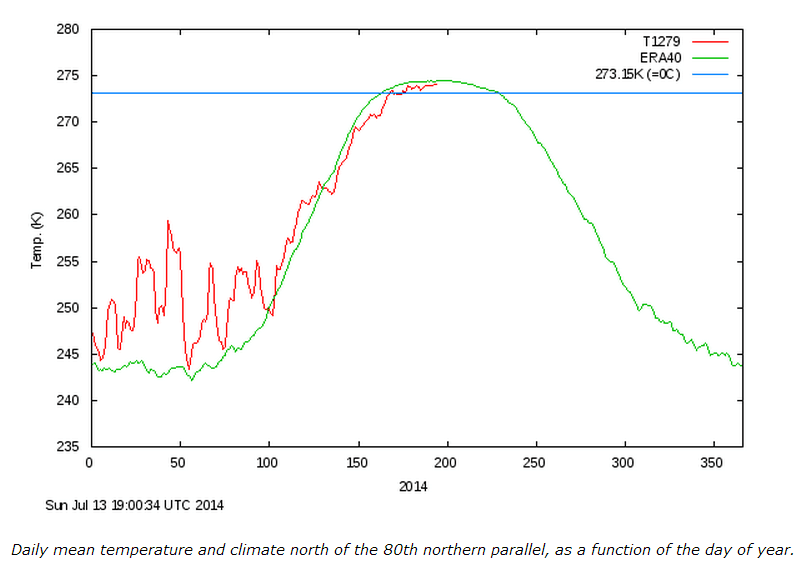Alarmists seem to have difficulty understanding that ice only melts at temperatures above its freezing point.
COI | Centre for Ocean and Ice | Danmarks Meteorologiske Institut
Alarmists seem to have difficulty understanding that ice only melts at temperatures above its freezing point.
COI | Centre for Ocean and Ice | Danmarks Meteorologiske Institut
Impressively following 2013
http://ocean.dmi.dk/arctic/plots/meanTarchive/meanT_2013.png
despite solar max.
That would be an average of temperature, so if half the region was colder than average and the other warmer than average, you’d still get melt.
Also half the day, with day warmer and night colder. So you’d also get freezing. Plus the regions where it is warmer or cooler shift, so areas that have net melting one day get net freezing the next.
Will Nitschke, you’d get just as much ice formation as melting if its an average at the freezing point.
And sea ice melts about 270 to 272 K so actually it is above melting point at the moment
Andy
At the end of winter, there is almost no salt in sea ice, and its mostly fresh water ice. It’s well known that the salt brine percolates through it back into the sea.
http://www.researchgate.net/publication/228922737_Desalination_processes_of_sea_ice_revisited
Yes, the temperature is above 273 K
Q.How much melting of thick sea ice happens at 1 or 2 degrees C?
A: Almost none.
Andy,
As usual you have no idea what you are talking about.
So how much melt will happen at +2 C? I doubt if much at all.